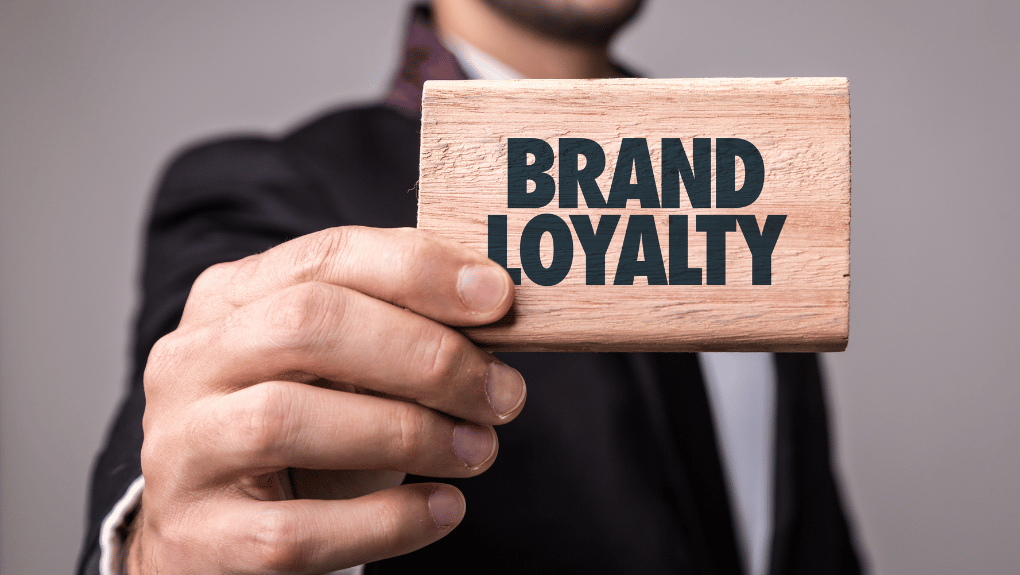The Role of Emotional Triggers in Lead Generation !
Competition is fierce, and attention spans are fleeting in this digital marketing era. Understanding the psychology behind customer behavior has also become a game-changer.
While data and analytics drive much of modern marketing strategy, the role of emotional triggers in lead generation is an often underestimated force that can propel your conversions to new heights.
In this article, we will delve into the realm of emotional triggers. We will explore their manifestations, including fear, joy, curiosity, and social proof.
Lastly, we will also provide real-life examples of how businesses can master the art of leveraging psychological factors for more effective conversions.
Understanding Emotional Triggers: The Unseen Influencer
At the core of every human decision lies an emotional trigger. These triggers are stimuli that tap into our subconscious, eliciting emotional responses that influence our choices.
Understanding and harnessing these emotional triggers can significantly impact a potential customer's decision-making process in the context of lead generation.
The Power of Fear and Curiosity: Real-Life Engagement
Fear is a primal emotion that has evolved as a survival mechanism. It's no wonder that businesses tap into this powerful emotion to drive conversions.
A classic example is the insurance industry. Geico's "15 Minutes Could Save You 15% or More on Car Insurance" campaign effectively plays on the fear of unexpected financial burdens in case of accidents. They nudge potential customers towards seeking coverage by highlighting the risk of being unprepared.
On the flip side, curiosity fuels our desire for exploration and learning. A prime example is Netflix's use of teaser trailers to promote upcoming shows. By revealing just enough to spark curiosity, they create anticipation and encourage viewers to explore further.
Similarly, Dropbox's offering additional storage space for referrals taps into users' curiosity about how much space they can accumulate through sharing, ultimately boosting their user base.
Eliciting Joy and Building Connections: Emotional Bonds
Positive emotions, particularly joy, are potent triggers that forge connections between brands and consumers. Coca-Cola has mastered this art with its timeless holiday campaigns. Their heartwarming commercials featuring families, friends, and Santa Claus evoke warmth, nostalgia, and happiness through expertly crafted video production.
These emotions become synonymous with the brand, leading consumers to associate Coca-Cola with cherished memories.
Building connections goes beyond joy; it's about relatability. Airbnb excels at this by sharing the personal stories of hosts and travelers. By showcasing authentic experiences and highlighting diverse backgrounds, they create an emotional connection between users and their platform.
This connection not only drives conversions but also cultivates brand loyalty.
Leveraging Social Proof: The Bandwagon Effect
Social proof, the phenomenon where people conform to the actions of others, is a powerful emotional trigger in the art of lead generation. Amazon, the e-commerce giant, uses this tactic masterfully. The "Customers who bought this also bought" section capitalizes on the idea that if others make similar choices, it must be a good decision.
This not only boosts sales but also encourages customers to explore related products.
TripAdvisor thrives on user-generated content as social proof. Genuine reviews and ratings from fellow travelers provide reassurance and influence booking decisions.
By curating real experiences, TripAdvisor taps into the emotional trigger of trust, making potential customers more confident in their choices.
Crafting Compelling Marketing Campaigns: Strategy in Action
Fusing emotional triggers with marketing campaigns demands a keen understanding of your target audience. Take Nike's "Dream Crazy" campaign featuring Colin Kaepernick as an example. By tapping into the emotions of empowerment, resilience, and social justice, Nike created a powerful connection with their audience and sparked conversations globally.
This emotional resonance not only boosted their brand but also led to increased sales.
Designing Persuasive Content: Evoke, Engage, Enchant
Content is the canvas upon which emotional triggers can be painted most vividly. Airbnb's "Belong Anywhere" campaign used storytelling to evoke adventure and belonging. Their videos showcased real people's travel experiences, capturing the emotions of discovery and connection. This approach didn't just promote their services; it inspired audiences to imagine the possibilities.

Jesper Nissen, the CEO and founder of Jesper Nissen SEO, says — “persuasive content is a powerful tool for conversion, as it understands the emotions and motivations of the target audience, thereby convincing them to take desired actions, creating a connection, building trust, and ultimately driving purchase or brand engagement.”
Creating Engaging User Experiences: Where Emotions Meet Interaction
User experience (UX) is the bridge between emotional triggers and conversions. Apple's website is a testament to this principle. Sleek design, intuitive navigation, and emotionally resonant visuals create an immersive experience. By appealing to the user's aesthetic and emotional sensibilities, Apple showcases its products and cultivates a sense of desire and ownership.
Holger Sindbaek, who runs World of Card Games, explains, "We took a simple yet powerful approach to engage users emotionally. Players often left our game when they got stuck on a challenging level. So, we introduced a 'Hint' button to illuminate a possible move. It's a small feature, but it made players feel supported and less frustrated, triggering positive emotions.
The outcome? Our user retention rate soared by 27% and saw a significant uptick in word-of-mouth referrals. Sometimes, the smallest tweak can turn a user's experience from frustrating to delightful, and that's where you capture hearts and leads."
Measuring Emotional Impact: Metrics Beyond Data
While the quantifiable metrics of data analytics remain essential, measuring emotional impact requires a nuanced approach. Brands can leverage surveys, sentiment analysis, and social media engagement to gauge the emotional resonance of their campaigns. For instance, Dove's "Real Beauty" campaign prompted conversations about self-esteem and body positivity, reflecting its emotional impact beyond conventional metrics.
The Ethical Dimension: Building Trust Through Authenticity
Ethical considerations must guide the way in the pursuit of leveraging emotional triggers. Transparency, authenticity, and respect for customers' emotions are paramount.
Airbnb's "Open Homes" initiative, offering housing to displaced individuals, is an emotionally driven campaign rooted in ethical principles. Businesses can foster trust and long-term loyalty by aligning emotional triggers with ethical actions.
How about an educational institution offering one of the best online degrees in social work? Reaching out and doing social work or service in society elicits a good impression and trust among its target market.
Navigating Challenges: Handling Negative Emotions
While positive emotions like joy and connection drive engagement, negative emotions can also play a role in lead generation. However, navigating this territory requires finesse. A brand addressing negative emotions must focus on solutions rather than exacerbating the problem. An online healthcare administration degree tackling the fear of illness might emphasize preventive measures and support, creating a sense of security and trust.
Long-Term Emotional Resonance: Building Brand Loyalty
Successful lead generation isn't just about immediate conversions; it's about fostering lasting relationships. Emotional triggers can be a key to building brand loyalty. Kyle Sobko, the CEO of an e-commerce business, SonderCare says— “Long-term emotional impact builds brand loyalty by creating a strong emotional connection with consumers.
This connection is formed through consistent positive experiences, memorable brand messaging, and the brand's ability to meet its target audience's needs and values. Through this, brands can establish trust and credibility, leading to repeat purchases and support from loyal customers.”

Apple's emotional design philosophy, evident in its products and marketing, has led to a community of dedicated customers. These captured clients feel emotionally connected to the brand's sleek aesthetics and innovative approach.
Cultural Sensitivity: Emotions Across Borders
Emotional triggers can vary across cultures and demographics. What evokes joy in one culture might not resonate the same way in another. Businesses operating in diverse markets must be culturally sensitive and attuned to emotional nuances. McDonald's tailors its menu offerings to cater to local tastes, recognizing that emotions tied to food vary widely.
The Ever-Evolving Landscape: Adapting to Change
The digital landscape is in a constant state of evolution. As technology advances and consumer preferences shift, emotional triggers must also adapt. The rise of virtual reality (VR) and augmented reality (AR) opens new avenues for emotional engagement. Brands can create immersive experiences, allowing customers to connect emotionally with products before purchasing.
Beyond Sales: Impact on Corporate Social Responsibility
Emotional triggers can extend beyond sales and conversions, influencing a company's stance on social issues. Brands like Patagonia have integrated environmental activism into their identity, resonating with eco-conscious consumers. By aligning emotional triggers with corporate social responsibility, brands can attract like-minded customers who share their values.
Final Thoughts
In a world where consumers are bombarded with information, emotional triggers provide a blueprint for creating meaningful connections. Combining data-driven insights with emotional resonance can lead to a holistic approach that drives conversions while fostering customer loyalty.
The examples and insights explored in this article underscore the importance of understanding the emotional landscape of lead generation. As businesses harness the power of emotional triggers, they unlock the potential to transform marketing from a transactional exchange to a deeply emotional journey.
As you embark on your lead generation endeavors, remember that the path to conversions is paved with emotional resonance. By tapping into the spectrum of emotions that drive human behavior, your marketing campaigns, content, and user experiences can transcend the ordinary, creating a lasting impact that resonates in the hearts and minds of your audience.
Embrace the power of emotional triggers and watch as your conversions soar to new heights.





